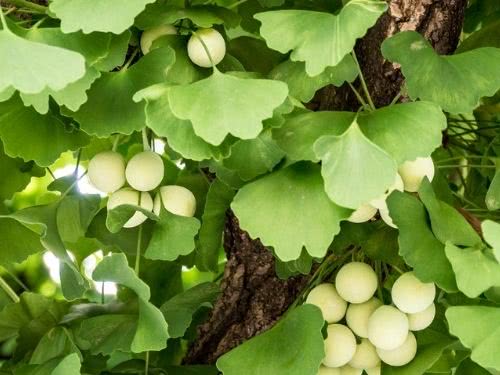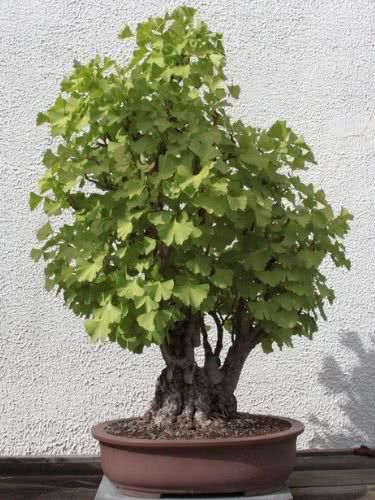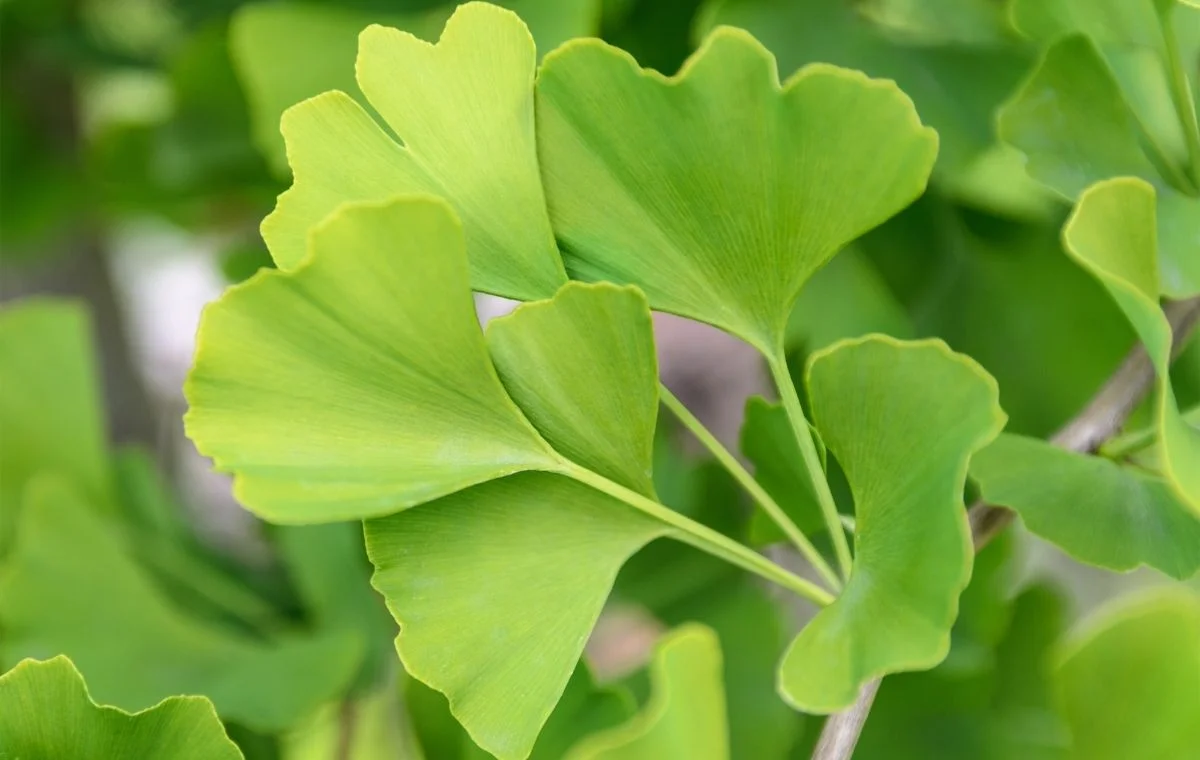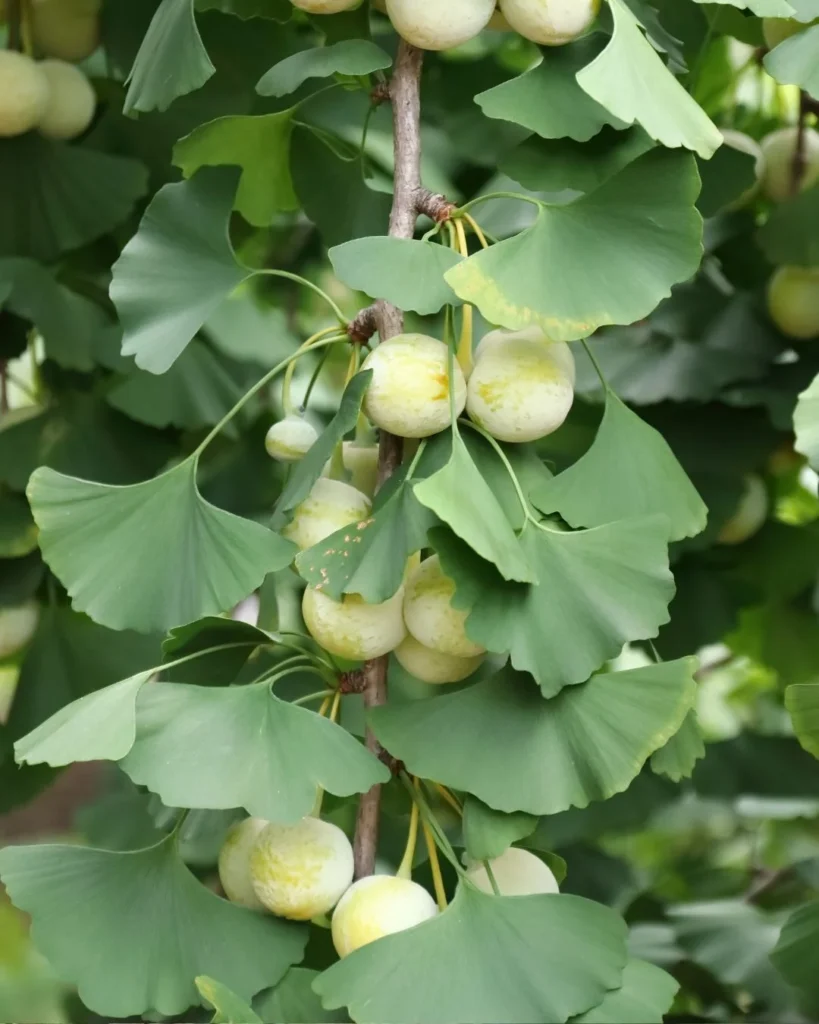The Ginkgo (Ginkgo biloba), also known as the Maidenhair Tree, is a perennial, dioecious (separate sexes), and deciduous tree that sheds its leaves during the winter. It holds both ornamental and medicinal value. Native to China, this tree is considered a living fossil, having existed for 200 million years. In Japan, it stands as one of the few species that survived the Hiroshima radiation, symbolizing peace and longevity in the East. Its trunk can reach a diameter of 60 to 150 cm (24 to 59 inches), and its height can reach up to 50 meters (164 feet). However, male individuals tend to be taller, while females have more open branches.

The leaves are distinct, composed of two lobes, with long petioles and bifurcated veins. Interestingly, their shape resembles a fan, a characteristic accessory in oriental culture. The foliage’s color is enchanting, displaying vibrant green in the summer and turning golden in the fall. However, its fruit emits an unpleasant odor when ripe and is not edible. The fruit is about the size of a plum and has a rounded shape with a yellow color. To produce fertile seeds, it’s essential to cultivate female trees near male trees.

The Ginkgo tree adds a unique touch to gardens, bringing the mysticism of oriental culture and highlighting seasonal changes, making landscaping even more intriguing. Its impressive size requires ample space, preferably away from buildings, in large residential gardens, parks, and estates.
It can be planted individually, in groups, or rows, and is recommended for urban tree planting, ideal for creating alleys. In early winter, as the leaves start to fall, they create a beautiful golden carpet around the tree. It offers an attractive contrast when placed near trees with dense canopies and dark colors, given its light-colored and elegant appearance. Keep in mind the unpleasant-smelling fruits of female trees and avoid planting them too close to residences.
Initially, it can be grown in pots and later transplanted directly into the ground or pruned to maintain a small size. This allows it to be cultivated indoors, where it has a decorative effect and contributes to air purification. It’s a slow-growing species but has remarkable longevity, potentially living for over 1,000 years. Maintenance involves springtime cleaning pruning, focusing on promoting healthy growth. Pay attention to avoid distorting the unique pyramidal growth of this tree. Despite the fruits’ disagreeable aroma, ginkgo seeds are edible and have been used for centuries in the East. They are served in tea ceremonies, as sweets and desserts, with sake, and have even become a component in pickled preserves.

Ginkgo thrives in partial shade or full sun. It prefers cool environments with good ground cover at its base. The ideal soil is slightly alkaline, tends to be sandy, rich in organic matter, and well-draining. It adapts well to urban areas, showing resistance to frost, cold, and pollution. It’s a cosmopolitan species, meaning it grows in gardens worldwide, adapting to different climates while favoring subtropical to temperate regions.
Watering should be daily when the tree is young, and in its adult phase, it should be done only during drought periods. Regarding replanting or transplantation, this should occur during winter or the rainy season. Ginkgo can be propagated through cuttings, grafts, or by planting fertile seeds (only from pollinated fruits).
The seeds have a dormant period and need stratification for proper germination. Harvest ripe fruits in mid-autumn, remove all pulp, place them in moist sand for 2 and a half months at a moderate temperature (15 to 21°C / 59 to 70°F). Then, continue stratification for an additional 2 to 3 months at 4°C / 39°F for proper embryo development before planting.


